Cornish pasties, those savory hand pies hailing from the rugged coast of Cornwall, England, are more than just a meal; they’re a delicious piece of history. Imagine biting into a warm, flaky crust, revealing a hearty filling of beef, potatoes, swede (rutabaga), and onion a complete and satisfying meal all wrapped up in a neat, portable package.
These iconic pastries weren’t originally designed for gourmets, but for Cornish tin miners. Legend has it that the thick, crimped crust served as a handle, allowing miners to hold the pasty with their dirty hands and discard the crust afterwards, avoiding arsenic contamination from the mines. Talk about a practical and ingenious design!
But what makes Cornish pasties so beloved today? It’s the perfect combination of textures and flavors. The tender, savory filling contrasts beautifully with the buttery, golden-brown crust. They’re incredibly satisfying, easy to eat on the go, and offer a taste of tradition with every bite. Whether you’re looking for a comforting lunch, a hearty snack, or a taste of Cornish heritage, these pasties are sure to delight. So, let’s get baking and bring a little bit of Cornwall into your kitchen!
Ingredients:
- For the Pastry:
- 500g strong bread flour, plus extra for dusting
- 120g lard, chilled and cubed
- 50g butter, chilled and cubed
- 1 tsp salt
- Approximately 150ml ice-cold water
- 1 egg, beaten, for glazing
- For the Filling:
- 500g beef skirt, cut into small ½ inch cubes
- 250g potatoes, peeled and diced into ½ inch cubes
- 250g swede (rutabaga), peeled and diced into ½ inch cubes
- 1 large onion, peeled and finely chopped
- 2 tbsp beef dripping or vegetable oil
- Salt and freshly ground black pepper to taste (generously!)
- Optional: A knob of butter for each pasty
Preparing the Pastry:
- Combine Dry Ingredients: In a large mixing bowl, sift together the flour and salt. This helps to aerate the flour and ensures the salt is evenly distributed.
- Add the Fats: Add the chilled lard and butter to the flour mixture. The key here is to keep the fats cold. If they get too warm, the pastry will be tough rather than flaky.
- Rub in the Fats: Using your fingertips, rub the fats into the flour until the mixture resembles breadcrumbs. Work quickly to prevent the fats from melting. You can also use a pastry blender for this step if you prefer. The mixture should have a sandy texture with some small lumps of fat remaining. These lumps are what create the flaky layers in the pastry.
- Add the Water: Gradually add the ice-cold water, a tablespoon at a time, mixing with a knife or your hands until the dough just comes together. Be careful not to add too much water, as this will make the pastry tough. The dough should be slightly sticky but not wet.
- Form the Dough: Gently bring the dough together into a ball. Avoid overworking the dough, as this will develop the gluten and make the pastry tough.
- Rest the Dough: Wrap the dough tightly in cling film and refrigerate for at least 30 minutes, or preferably an hour. This allows the gluten to relax, making the pastry easier to roll out. Chilling the dough also helps to keep the fats solid, which is essential for a flaky crust.
Preparing the Filling:
- Prepare the Beef: Cut the beef skirt into small, ½ inch cubes. Beef skirt is traditionally used in Cornish pasties because it’s a relatively inexpensive cut that becomes tender and flavorful when cooked slowly.
- Prepare the Vegetables: Peel and dice the potatoes and swede (rutabaga) into ½ inch cubes. Finely chop the onion. The size of the vegetables is important; they need to be small enough to cook through during the baking time.
- Sauté the Onion (Optional): In a large frying pan or skillet, heat the beef dripping or vegetable oil over medium heat. Add the chopped onion and sauté until softened and translucent, about 5-7 minutes. This step is optional, but it helps to mellow the onion’s flavor and prevent it from being too overpowering in the finished pasty.
- Combine the Filling Ingredients: In a large bowl, combine the cubed beef, potatoes, swede, and sautéed onion (if using). Season generously with salt and freshly ground black pepper. Don’t be shy with the seasoning; the filling needs to be well-seasoned to balance the richness of the pastry.
Assembling the Pasties:
- Preheat the Oven: Preheat your oven to 220°C (200°C fan/Gas Mark 7). Make sure the oven is fully preheated before you start baking the pasties.
- Divide the Dough: Remove the pastry dough from the refrigerator and divide it into 4-6 equal portions, depending on the size of pasties you want to make.
- Roll Out the Dough: On a lightly floured surface, roll out one portion of the dough into a circle approximately 8-10 inches in diameter. The pastry should be thin but not so thin that it tears easily.
- Fill the Pastry: Place a generous handful of the filling in the center of the pastry circle, leaving a border of about 1 inch around the edge. If desired, add a small knob of butter on top of the filling for extra richness.
- Moisten the Edges: Lightly brush the edges of the pastry circle with water or beaten egg. This will help to seal the pasty properly.
- Fold and Seal: Fold the pastry circle in half over the filling to form a semi-circle. Press the edges together firmly to seal.
- Crimp the Edges: Crimp the edges of the pasty to create a decorative and secure seal. There are several ways to crimp a pasty. The traditional Cornish crimp is a side crimp, where the crimp runs along the top edge of the pasty. You can also do a top crimp, where the crimp runs along the curved edge of the pasty. To create a side crimp, start at one end of the semi-circle and use your thumb and forefinger to pinch and fold the pastry over itself, working your way along the edge. To create a top crimp, use a fork to press the edges together.
- Glaze the Pasties: Place the assembled pasties on a baking sheet lined with parchment paper. Brush the tops of the pasties with beaten egg to give them a golden-brown color.
- Create Steam Vents: Cut a small slit or make a few small holes in the top of each pasty to allow steam to escape during baking. This will prevent the pasties from bursting.
Baking the Pasties:
- Bake at High Temperature: Bake the pasties in the preheated oven for 15-20 minutes, or until the pastry is golden brown. The high temperature helps to set the pastry quickly and create a crisp crust.
- Reduce Temperature and Continue Baking: Reduce the oven temperature to 180°C (160°C fan/Gas Mark 4) and continue baking for another 40-45 minutes, or until the filling is cooked through and the potatoes and swede are tender. The total baking time will depend on the size of the pasties and the oven.
- Check for Doneness: To check if the filling is cooked through, insert a skewer into the center of a pasty. The skewer should come out easily, and the potatoes and swede should be tender.
- Rest Before Serving: Remove the pasties from the oven and let them rest on the baking sheet for a few minutes before serving. This allows the filling to settle and the pastry to cool slightly.
Serving Suggestions:
Cornish pasties are traditionally served hot, straight from the oven. They are a complete meal in themselves, but you can also serve them with a side of gravy or chutney. They are also delicious cold, making them perfect for picnics or packed lunches.
Enjoy your homemade Cornish pasties!
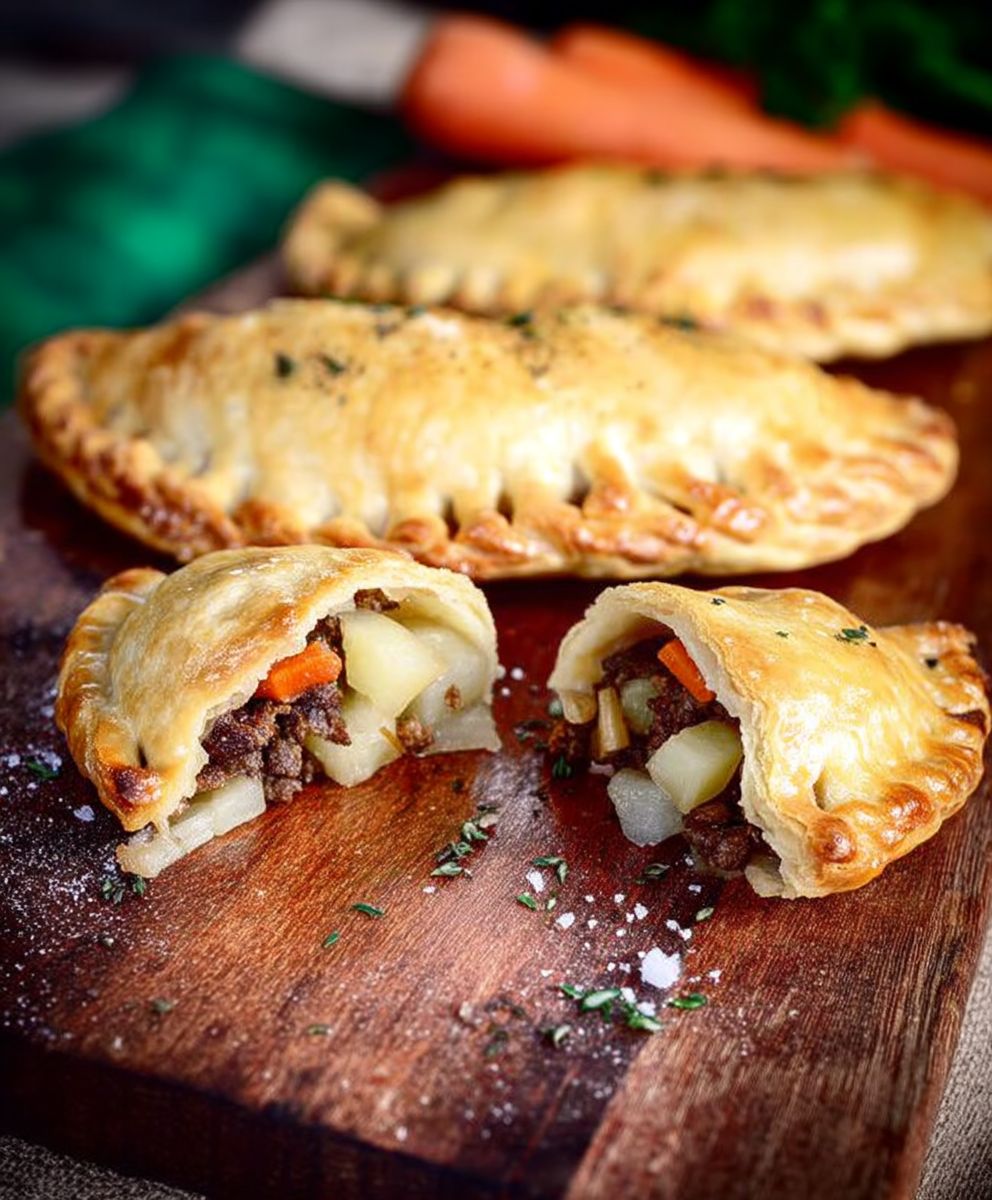
Conclusion:
And there you have it! I truly believe this Cornish pasties recipe is a must-try, not just because it’s steeped in history and tradition, but because it delivers a deeply satisfying and comforting meal. The combination of savory beef, hearty vegetables, and that perfectly crimped, golden-brown crust is simply irresistible. It’s a dish that’s perfect for a cozy night in, a picnic in the park, or even a special occasion.
What makes this recipe so special is its versatility. While I’ve shared my go-to filling, feel free to experiment with different vegetables. Swedes (rutabagas) are a classic addition, but you could also try adding parsnips for a touch of sweetness or even some mushrooms for an earthy flavor. For a vegetarian option, you can easily substitute the beef with lentils or a mixture of root vegetables and beans. Just be sure to adjust the cooking time accordingly to ensure everything is cooked through.
Serving suggestions are endless! These pasties are delicious on their own, but a dollop of brown sauce or a side of pickled onions can really elevate the experience. For a more substantial meal, serve them with a side salad or some steamed greens. And don’t forget the gravy! A rich beef gravy or even a simple onion gravy would be the perfect accompaniment.
Beyond the traditional, consider these fun variations:
* Mini Pasties: Perfect for appetizers or party snacks, simply reduce the size of the pasties and adjust the baking time.
* Spicy Pasties: Add a pinch of chili flakes or a dash of hot sauce to the filling for a fiery kick.
* Cheese Pasties: Sprinkle some grated cheese, like cheddar or Gruyere, over the filling before sealing the pasties for a cheesy delight.
* Sweet Pasties: While traditionally savory, you can even create sweet pasties with fillings like apple and cinnamon or berry compote.
I’ve poured my heart into perfecting this recipe, and I’m confident that you’ll love it as much as I do. The key to a truly great pasty is patience and attention to detail. Don’t rush the process, and be sure to crimp the edges tightly to prevent any filling from escaping during baking.
But most importantly, don’t be afraid to experiment and make it your own! Cooking should be fun and creative, so feel free to adjust the recipe to suit your taste preferences.
I’m so excited for you to try this Cornish pasties recipe! Once you do, I would absolutely love to hear about your experience. Did you make any variations? What did you serve them with? What did your family and friends think? Share your photos and stories in the comments below! Your feedback is invaluable, and it helps me to continue creating and sharing recipes that you’ll love. So, go ahead, grab your ingredients, and get baking! I promise you won’t be disappointed. Happy cooking!
Cornish Pasties: A Delicious Guide to Cornwall's Iconic Dish
Hearty Cornish pasties filled with beef, potatoes, swede, and onion, encased in a flaky, homemade pastry crust. A traditional and satisfying meal!
Ingredients
- 500g strong bread flour, plus extra for dusting
- 120g lard, chilled and cubed
- 50g butter, chilled and cubed
- 1 tsp salt
- Approximately 150ml ice-cold water
- 1 egg, beaten, for glazing
- 500g beef skirt, cut into small ½ inch cubes
- 250g potatoes, peeled and diced into ½ inch cubes
- 250g swede (rutabaga), peeled and diced into ½ inch cubes
- 1 large onion, peeled and finely chopped
- 2 tbsp beef dripping or vegetable oil
- Salt and freshly ground black pepper to taste (generously!)
- Optional: A knob of butter for each pasty
Instructions
- Prepare the Pastry:
- In a large mixing bowl, sift together the flour and salt.
- Add the chilled lard and butter to the flour mixture.
- Using your fingertips, rub the fats into the flour until the mixture resembles breadcrumbs.
- Gradually add the ice-cold water, a tablespoon at a time, mixing with a knife or your hands until the dough just comes together.
- Gently bring the dough together into a ball.
- Wrap the dough tightly in cling film and refrigerate for at least 30 minutes, or preferably an hour.
- Prepare the Filling:
- Cut the beef skirt into small, ½ inch cubes.
- Peel and dice the potatoes and swede (rutabaga) into ½ inch cubes. Finely chop the onion.
- In a large frying pan or skillet, heat the beef dripping or vegetable oil over medium heat. Add the chopped onion and sauté until softened and translucent, about 5-7 minutes. (Optional)
- In a large bowl, combine the cubed beef, potatoes, swede, and sautéed onion (if using). Season generously with salt and freshly ground black pepper.
- Assemble the Pasties:
- Preheat your oven to 425°F (220°C).
- Remove the pastry dough from the refrigerator and divide it into 4-6 equal portions, depending on the size of pasties you want to make.
- On a lightly floured surface, roll out one portion of the dough into a circle approximately 8-10 inches in diameter.
- Place a generous handful of the filling in the center of the pastry circle, leaving a border of about 1 inch around the edge. If desired, add a small knob of butter on top of the filling for extra richness.
- Lightly brush the edges of the pastry circle with water or beaten egg.
- Fold the pastry circle in half over the filling to form a semi-circle. Press the edges together firmly to seal.
- Crimp the edges of the pasty to create a decorative and secure seal.
- Place the assembled pasties on a baking sheet lined with parchment paper. Brush the tops of the pasties with beaten egg to give them a golden-brown color.
- Cut a small slit or make a few small holes in the top of each pasty to allow steam to escape during baking.
- Bake the Pasties:
- Bake the pasties in the preheated oven for 15-20 minutes, or until the pastry is golden brown.
- Reduce the oven temperature to 350°F (180°C) and continue baking for another 40-45 minutes, or until the filling is cooked through and the potatoes and swede are tender.
- Remove the pasties from the oven and let them rest on the baking sheet for a few minutes before serving.
Notes
- Keeping the fats cold is crucial for a flaky pastry.
- Don’t overwork the dough, as this will make the pastry tough.
- Season the filling generously.
- Serve hot, with gravy or chutney, or enjoy cold.

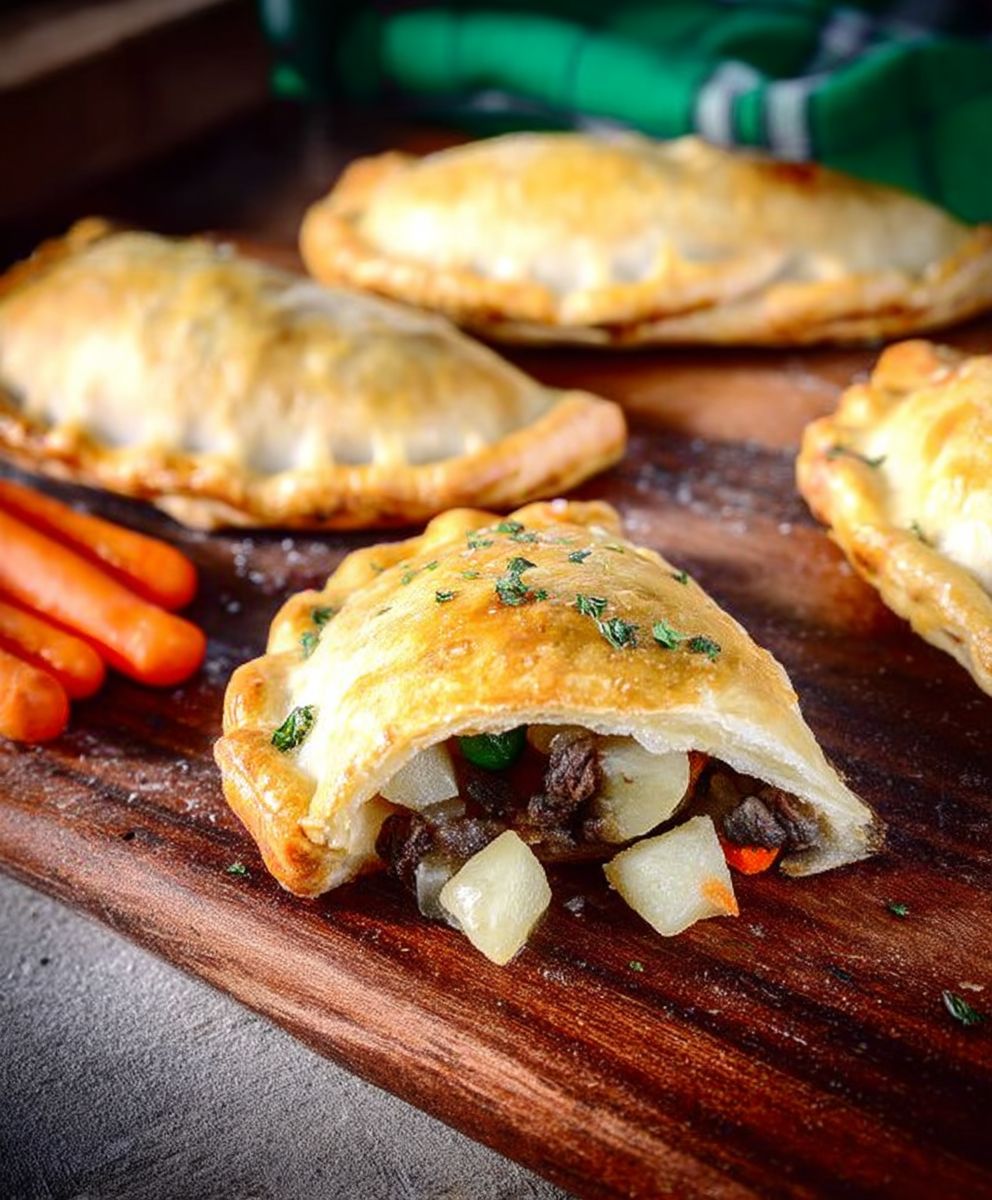
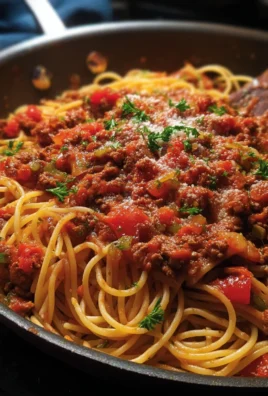
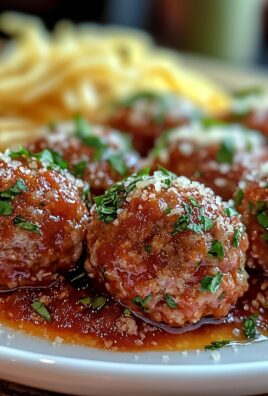
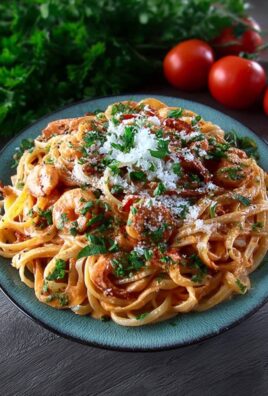
Leave a Comment